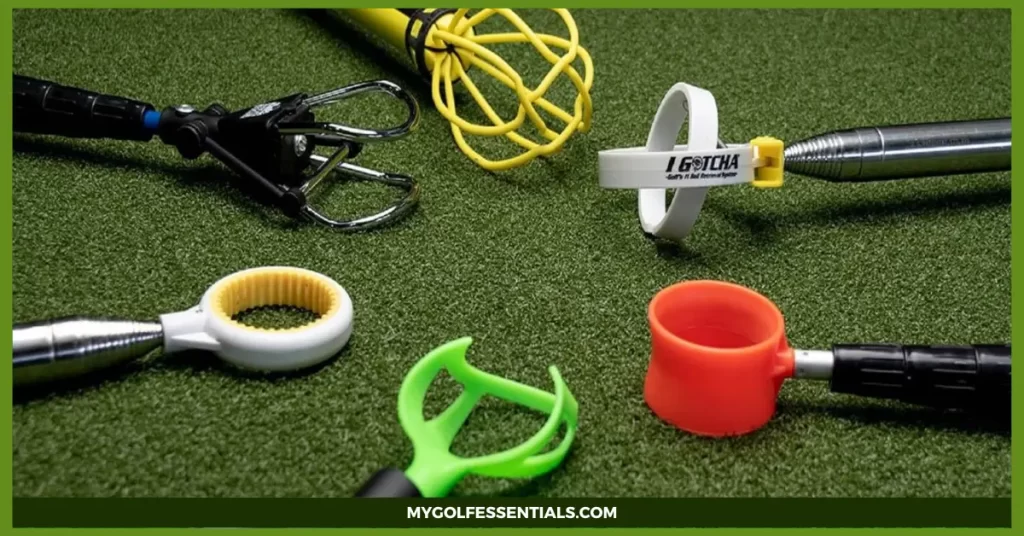
Welcome to a comprehensive history of the fascinating sport of golf! We’ll take you on an odyssey through time, cover its origin mythos, and explore how it has remained popular for centuries.
From noble kings playing in their fields with handmade clubs to professional tournaments boasting high stakes and legendary players, we’ll chronicle this classic sport’s awe-inspiring evolution. Read on for further insight into the mechanics, traditions, and regulations that have kept golf alive for hundreds of years!
History of Golf
Golf has been around for centuries. It is believed that the modern game of golf originated in 15th-century Scotland, where it was first played on the open links of St Andrews. Over time, golf spread throughout Britain and then to other countries. By the 19th century, golf had become an international sport and was enjoyed by players of all backgrounds and levels of skill.
Golf is a game of skill, strategy, and finesse. Players must use well-timed swings to hit the ball off the tee box onto the fairway, then onto the green, before finally sinking it in the hole. Along the way, players must avoid hazards and strategize around course obstacles to score the lowest possible number of strokes.
What is Golf

Golf is a club-and-ball sport where players use various clubs to hit balls into a series of holes on a course. The game’s object is to complete the course with the fewest strokes. Golf is one of the oldest sports played today, dating back to the 15th century.
Golf is a skill and strategy game requiring players to have strong physical, mental, and emotional capabilities to excel. Players must be able to make precise swings with clubs of varying lengths and weights, read greens accurately, plan their shots carefully, and calculate the distance each shot will travel.
There are 18 holes on a regulation golf course, and the overall score for a round of golf is the total number of strokes taken to complete all the holes.
Popular players
Golf has some of the most popular players in all of sports. Players like Jack Nicklaus, Tiger Woods, and Phil Mickelson have made names for themselves through their successful careers on the links. These players are often considered among the greatest golfers ever to play the game. As such, they have become icons in the sport and helped to bring golf into the public consciousness.
Golf is also a particularly popular spectator sport, with many different professional events occurring worldwide each year. These tournaments often feature some of the best players, and spectators can witness incredible performances on the links.
Golf can also be enjoyed by players of all skill levels, from beginners to advanced. The game is easy to learn, and plenty of courses offer something for everyone. Whether you’re looking for a relaxing day out on the course or an intense competition, golf has something to offer everyone.

Learning the Rules of the Game and Keeping Score
Golf is great for all ages and genders, but it’s important to understand the rules before you hit the course. From winning strategies to keeping score and understanding penalties, familiarizing yourself with the fundamentals will help you play at your best.
For starters, golfers use their handicap indexes – determined by taking a golfer’s best scores over several rounds – to determine how many strokes they get in each round. This allows players of different skill levels to compete on an even playing field, as those with lower handicaps tend to have a better chance of winning.
When keeping score, it’s important to understand the par for each hole. Par is the expected number of strokes a golfer should take on a particular hole. If it takes you more than par to reach the green, you have a bogey; if it takes fewer strokes, you have a birdie. Eagles – two shots under par – and double bogeys are also common scoring terms.
Getting Started with Golf – Tips for Beginners on Equipment, courses, techniques, and Safety

Are you new to the world of golf and looking for some guidance? You’ve come to the right place! Here we will advise on equipment, courses, techniques, and Safety that can help you get started with golf.
When it comes to choosing the right equipment for your game, there are a few essential pieces that every beginner should consider. A good set of clubs is essential for every golfer, and there are various types to choose from. You’ll also need golf balls, tees, and a golf bag. Remember protective equipment like golf gloves, hats, sunglasses, and proper footwear.
When choosing a course to play on, consider your budget, the difficulty level you’re looking for, and the location. Consider visiting a public course or driving range if you feel overwhelmed by too many choices.
Types of play, single play, team play, and scramble vs. best ball
Golf is a game that individuals or teams can play. The type of play chosen will depend on the number of players and the desired goal. Single play is when one player competes against all other players on the field. Team play is when two players, sometimes more, join forces to compete against other pairs. Scramble versus Best Ball is when two teams of two or three players compete against each other.
In a scramble format, both players hit a shot, and the team selects the best shot to use for their next stroke. This continues until the hole has been completed. In Best Ball, each player plays their ball, and the team’s best score is used for their team’s score.
No matter the type of play, golf can be an enjoyable and rewarding experience for all involved. It encourages sportsmanship, camaraderie, and pride in one’s punishments. With some practice and dedication, golfers can perfect their technique and become competitive players.
List of equipment needed and typically used for golf
Golf is a popular sport that requires various equipment to succeed. To get started, it’s instant to have the essential gear, which includes the following: golf clubs, golf balls, tees, golf gloves, shoes with spikes or soft spikes, and apparel such as shirts and hats. Other items may be needed depending on the level of play, such as golf bags, push carts, towels, umbrellas, and rangefinders.
Golf clubs typically have a driver, fairway woods, irons/hybrids, wedges, and putters. Drivers are the longest and lightest club in the bag, allowing maximum distance off the tee. Fairway woods are slightly shorter and heavier than drivers for increased accuracy. Irons/hybrids also help when hitting the ball off the fairway, while wedges are used to hit shots from tight areas or out-of-sand bunkers.
Golf innovations and tech to help your game
Golf is a sport that has been around for centuries, and there have been many technological advances over the years to improve the game. Several innovations can help you take your golfing game to the next level, from clubs to balls to even the most high-tech gadgets.
Do you want to drive the ball farther and straighter? Look for clubs with more forgiving technology to help you hit a straight shot each time. Graphite shafts can be incredibly lightweight, while stainless steel can provide extra power and consistency. Newer golf balls have enhanced urethane covers, increasing spin rate and giving greater control on approach shots.
Rangefinders:
Rangefinders are devices that measure the distance of a shot to the pin or other hazard. They use lasers to provide accurate yardage, and they can give you valuable insight into your approach shots. Some rangefinders even feature slope technology which factors in elevation changes and lets you adjust for them accordingly.
Golf simulators:
Golf simulators are the perfect solution for those who want to work on their game indoors. With a golf simulator, you can use your clubs and hit real balls to track your performance. The data can help analyze your swing and technique and make adjustments that improve your overall game.
Golf alignment sticks:
Alignment sticks are a great tool for those wanting to perfect their swing. They can help you establish the perfect angle to ensure your hands and body stay in line throughout the swing. Alignment sticks also allow you to practice without hitting balls or being on a golf course. The media could not be loaded because the server or network failed or the format was not supported.
Golf swing aids
Golf swing aids are designed to help improve your technique and can be used with other training tools. They come in various shapes and sizes and can assist you with various swing drills that help develop muscle memory for proper form.
Selecting the Most Suitable Course for Your Level of Play
For the average golfer, selecting a course to play primarily depends on their level of play. The most suitable course for you should be one that will challenge your skills and improve your game without leaving you feeling overwhelmed or frustrated. To make sure you select the right golf course for your level of play, consider these factors:
Course difficulty: An important factor to consider is how difficult the course is. If you’re rendering, choose a course with shorter holes and fewer hazards that will allow you to get comfortable with the game without becoming too frustrated. As your skills improve, you can select courses of increasing difficulty, such as those with longer holes and more challenging hazards.
Course size: The course size is also important, especially if you want to play a round quickly. Courses 18 hours or longer can take several hours, whereas shorter courses may only take an hour or two. If you’re for a quick and easy round of golf, opt for a 9-hole or shorter course.
Course amenities: Additionally, you should consider the amenities offered at each course. These may include practice facilities, a clubhouse with food and drinks, a driving range, or even a pro shop for purchasing equipment. Knowing what amenities are available can help you select the course that provides the best experience for your level of play.
Benefits of Golf – Discuss physical and mental health benefits, as well as the social aspects
Golf is a popular sport, offering a variety of physical, mental, sign, and social benefits. On the physical side, golf can help improve flexibility, balance, and coordination; it also helps maintain muscle tone and bone strength. And since it’s us, its instructors played outdoors in the fresh air; golfers get plenty of sunshine for Vitamin D production.
Mentally, golf can be very calming and relaxing. It requires focus and concentration to perform accurately, which helps reduce stress levels and improve mental well-being. Plus, the social aspect of golf encourages friendship and camaraderie with other players. This improves self-confidence and motivation as you learn from each other’s successes.
No matter your age or ability, golf can be a great way to stay active and healthy while having fun and connecting with friends. So why not give it a try today? Who knows, major, you may find a new passion in golf!
FAQs
How do I improve my golf game?
The best way to improve your golf game is to practice. Regularly hitting balls at the driving range and playing on the course can help you better understand how to adjust your swing for different shots. Working with a professional instructor or taking lessons can also help you improve your form and accuracy. Lastly, stretch and warm up before each round, as this can increase your flexibility and help prevent injuries.
What Is The Maximum Number Of Clubs I Can Carry In My Golf Bag?
The maximum number of clubs in your golf bag is 14. Keeping the right combination of clubs will ensure you are prepared for any situation on the golf course. Generally, a good combination of clubs includes a driver, fairway woods, hybrids, irons, wedges, and a putter.
How long should my golf rounds take?
The length of your round will depend on how fast you play and the type you are playing. Generally, a round of 18 holes should take around four hours to complete, though this can vary from course to course. To speed up play, PGA Championship, stay on the group’s pace ahead and keep track of your shots.
What is the best way to read greens?
Reading greens is an important skill to master in golf. To read the green, examine its contours and slopes briefly. Pay attention to the terrain’s features, such as the fall lines, majors speed of the grass, and breaks. Also, check your surroundings for ground-level variations and wind direction that affect your ball’s reaction. The more you practice reading greens, the better you will become at it.
What is the proper golf etiquette?
Certain rules of courtesy and etiquette should be followed when playing golf. Make sure to observe all course regulations, keep up with the pace of playoff, always replace your divots, and repair any ball marks on the green.
Conclusion
I hope that this article has helped you to gain a better understanding of the basics of playing golf. Golf is incredibly popular, and it’s to see why. Its combination of individual skill and relaxation can provide hours of entertainment for all ages.
Whether you’re starting or have been playing for years, learning the basics of golf will give you a great foundation to improve your game. You can take your game to the next level with practice and patience!



